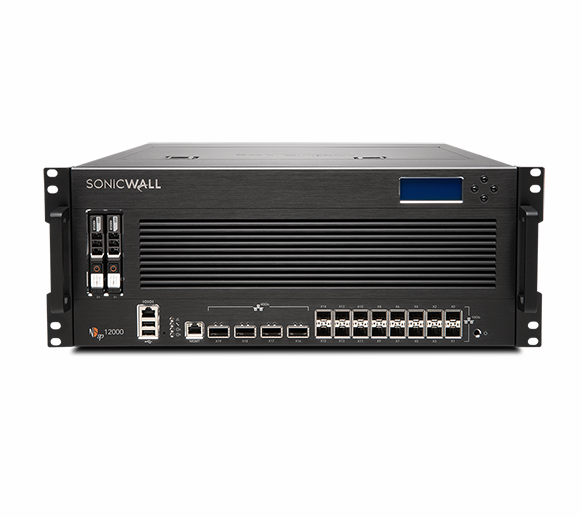SonicWall Inc. has launched a new set of hardware, software, and hosted security products tailored to the needs of mid-tier enterprises, including managed security service providers.
The new offerings and associated capabilities—many of which are suited for use by smaller companies as well—represent a major new strategic push by the Milpitas, Calif.-based vendor beyond its traditional SMB customer base into companies with roughly 500 to 2,500 seats.
They also follow big release waves in April of this year and September of last year. In all, SonicWall has shipped 24 new products packing 160 million lines of code in the last nine months.
Significantly, the company will back its new mid-tier enterprise portfolio with a team of engineering and technical sales personnel tasked with helping partners close deals.
“We’re still 100 percent channel 100 percent of the time, but we will be strengthening and putting resources into direct touch to work with our partners and directly with the end users,” says SonicWall President and CEO Bill Conner. Those investments come in response to requests for such assistance from channel pros who serve larger businesses.
“They don’t want us to compete with them, but they need us alongside with them,” Conner says. “The customers want to hear from us too.”
The foundation for SonicWall’s latest platform expansion is an enhanced edition of its Capture Security Center product designed to combine monitoring and management of endpoint, firewall, and cloud application security systems with reporting and analytics functionality.
“It’s a single pane of glass that kind of brings everything together,” says Atul Dhablania, SonicWall’s COO, who notes that MSSPs in particular crave that consolidated visibility into an entire security environment.
“They’re kind of tired of looking at multiple consoles or multiple ways of looking at the threats,” he says. “They want to be able to get a holistic view.”†Future editions of Capture Security Center will further extend that view to encompass email security, secure mobile access, and other functions, Dhablania adds.
Also announced today is new integration between SonicWall’s Capture Client endpoint protection system and Capture ATP sandbox service. Introduced in April, Capture Client draws on artificial intelligence-based behavioral analysis from SentinelOne, of Mountain View, Calif., to provide real-time threat identification. Linking that system with Capture ATP enables SonicWall to upload threats with moderate risk scores to the cloud for immediate inspection.
The new functionality is available to all users of those systems, including SMB customers.
Capture ATP incorporates SonicWall’s Real-Time Deep Memory Inspection (RTDMI) technology, which forces malware exhibiting no malicious behavior to reveal its hidden weaponry, even if the relevant code is encrypted and visible for 100 nanoseconds or less. To date, Conner says, RTDMI has identified 5,000 zero-day exploits that no other commercial sandbox has spotted. SonicWall unveiled the previously secret technology this February.
Rounding out the software portion of today’s product wave is the new Cloud App Security solution. Though not a full-blown Cloud Application Security Broker, the new system provides real-time visibility into compliance and privacy risks associated with an end user’s cloud-based solutions. It can be used by small as well as large end users, according to Lawrence Pingree, SonicWall’s vice president of product management.
“Mid-market customers have more compliance mandates, so they tend to want to know what SaaS applications are being used, but frankly everyone wants to be able to see that visibility,” he says. A former Gartner security analyst, Pingree joined SonicWall in April.
The hardware component of SonicWall’s mid-tier product family includes six new firewalls. Equipped with 10-GbE and 2.5-GbE interfaces, the NSa 6650, 9250, 9450, and 9650 offer up to 1.5 times better performance than earlier SonicWall models. They also support nearly five times as many stateful packet inspection (SPI) connections and 25 times as many SSL/TLS deep packet inspection (DPI) connections.
“Traditional firewalls are not capable of doing DPI-SSL at the scale that we are in these new releases,” Pingree says, noting that some 70 percent of the traffic firewalls process at present is encrypted.
The two other new firewalls, named the NSsp 12400 and 12800, are designed to provide even greater horsepower to MSSPs, distributed enterprises, campus environments, and data centers. Both devices feature 40-GbE and 10-GbE interfaces and utilize a mix of cloud-based and onboard threat prevention technologies.†SonicWall signaled its increased interest in MSSPs this March when it added a new managed security specialization to its SecureFirst partner program.
All of SonicWall’s newest firewalls come with a range of optional high availability bundles designed to help end users build redundancy into their security perimeter without having to purchase a complete second set of hardware and services.
According to Dhablania, SonicWall’s mid-tier catalog completes the dramatically widened and revamped portfolio the company began rolling out last fall, some 10 months after Dell Technologies spun it off as an independent company. Underlying all of those systems is a conviction that firewalls alone are insufficient to protect businesses with mobile workers using cloud-based applications.
“It’s not about perimeter security anymore,” Dhablania says.
Ransomware, advanced persistent threats, and other hazards are fueling increased outlays on security. IDC expects worldwide spending on security hardware, software, and services to rise 10.2 percent this year to $91.4 billion.














